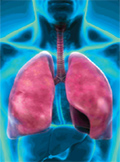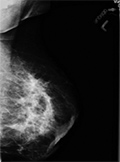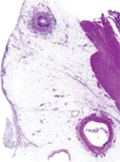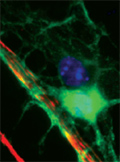The eLitMed.hu medical portal uses computer cookies for convenient operation. Detailed information can be found in the Cookie-policy.
Lege Artis Medicinae - 2015;25(10)
Content
[Current questions on Pneumococcus infections: cardiovascular complications, cardiotoxicity and new opportunities for prevention among elderly people]
[The respiratory tract infections, first of all severe pneumonia are associated with severe cardiovascular adverse events the significance of which that had not been recognised so far. Among the adverse events, the development of acute coronaria syndromes, heart failure, arrhythimias are the most important ones leading to significatly higher mortality even after several years. In the development of acute coronaria syndrome , the proinflammatory activites play the cenral role leading to the instability of coronaria plaques and plaque rupture associated with formation of platelet thrombi. The constriction of coronariae, peripherial vasodilatation and hypoxia also contribute to the deleterius complications. The role of pneumococci in this process seems to be especially significant since this pathogen exhibit a unique direct cardiotoxic effect, namely directly invades the myocardium and produce cardiotoxic substances. As a consequence, impairement of cardiomyocite function and contractility and formation of microscopic lesions in which later collagen deposition and long-term cardiac scarring can be detected. These pathological processes are developed despite of antibiotic treatment, consequently, vaccination against pneumococcal infection seems to be the only method for efficacious prevention of the myocardium damage and cardiovascular adverse events. According to the results of the CAPITA study, the conjugate polisaccharide vaccine decrease the number of pneumococcal pneumonia and invasive pneumococcal infections by 45 and 75% resp. in the elderly population. The recognition of the direct and indirect role of pneumococci in the development of early and late cardiovascluar adverse events gives a new aspect of the beneficial effect of efficacious vaccination.]
[Insulin pump therapy in type 1 diabetes in the light of efficacy, safety, and quality of life]
[The level of glycaemic control necessary to achieve optimal outcomes in subjects with type 1 diabetes mellitus typically requires intensified insulin therapy using multiple daily injections or continuous subcutaneous insulin infusion (CSII). For CSII, the insulins of choice are the rapid-acting insulin analogues: insulin aspart, insulin lispro and insulin glulisine. The advantages of CSII over multiple daily injections in adult and paediatric populations with type 1 diabetes include superior glycaemic control, lower insulin requirements and better health-related quality of life/patient satisfaction. An association between CSII and reduced hypoglycaemic risk is more consistent in children/adolescents than in adults. The use of CSII is widely recommended in both adult and pediatric type 1 diabetes mellitus populations, but is limited in pregnant patients. The review also discusses the result of the “A non-interventional trial to observe the effect of the use of Accu Chek Combo device on quality of life and metabolic control“(COM-1101-HU 1.3).]
[The evaluation of statin adherence in patients from the village of Méhkerék]
[INTRODUCTION - One of the basic elements of cardiovascular prevention is lipid lowering therapy, the quality of which is indicated by the increasing rate of lipid target values achieved during recent years. Further improvement is needed and for this the enhancement of patient adherence to statin treatment is a possible way. PATIENTS AND METHODS - The prescription habits in 81 patients taking statins (41 atorvastatin and 40 rosuvastatin) from 392 randomly selected ones for another study were analysed from the database of general practitioner in the village called Méhkerék in Békés County, Hungary. RESULTS - The statin adherence of the patients was evaluated in two different ways: the estimation by the general practitioner and the determination of prescribed drug boxes during one year. There was no significant difference between the two methods. Similarly, no significant difference was found between the atorvastatin or rosuvastatin adherence. The reduction of total cholesterol was significantly greater in patients taking rosuvastatin (p=0.03). A significant correlation was found between the prescribed box numbers and the decrease of LDL- and total cholesterol. CONCLUSIONS - The patients’ adherence seems to be independent from the type of statin. For the evaluation of patient adherence the GP's simple estimation and determination of prescribed drug boxes during one year are equally appropriate. This suggests, that the GP would be able to select those patients whose education needs longer time. ]
[Sudden death of a patient with purpura - post mortem recognized eosinophilic granulomatosis with polyangiitis]
[INTRODUCTION - Systemic diseases may sometimes be challenging because physicians do not think about synthesizing the parts to a single entity. CASE REPORT - A 49-year-old asthmatic female was admitted to hospital for the investigation of her cutaneous symptoms suggestive of vasculitis associated with diffuse joint complaints. The chest X-ray raised the possibility of pneumonia or neoplastic disease. Following an episode of chest pain relieved by a non-steroidal anti-inflammatory drug, she suddenly died. Her previous history included restrictive cardiomyopathy, insufficiency of both atrioventricular valves and long dating eosinophilia. Autopsy revealed a partly granulomatous eosinophilic inflammatory process in several organs, including the heart, the lungs, the kidneys, the colon and the pituitary gland. Retrospective collection of unknown anamnestic features and symptoms made possible to unify the pieces of information and symptoms to a single entity, the Churg-Strauss syndrome (eosinophilic granulomatosis with polyangiitis, EGPA). CONCLUSIONS - Bronchial asthma seldom leads to death. It can rarely be part of the Churg-Strauss syndrome, of which the manifestation may be related to the administration of leukotriene antagonists also used in the presented case. These drugs may allow the withdrawal of systemic steroid therapy which is beneficial not only in the treatment of asthma but also of the syndrome. Lowering the dose of steroids may promote the development of the full blown pattern of the latter.]
Psychoneuroimmunology and the embodied mind
One of the major philosophical aspirations in contemporary consciousness research is to find a framework of explanation that could successfully address the problem of mind-body relations. Descartes is often regarded as the father of dualism in modern philosophy of mind. Phenomenology and embodiment may dissolve the problem of dualism in the waters of the experiential features of the life-world and the subject. Recent findings in psychoneuroimmunology have shown that somato-psychic mechanisms exist through which bodily stimuli are translated into neuropsychological events resulting in alterations in certain behavioral patterns. These may as well include changes in the qualitative features of the lived body (Leib) resulting in an overall change in the subjective experience. The application of modern embodiment theories in life sciences has the potential to create a novel, fruitful and heuristic approach, which may help us unveil features of the “mind-body phenomenon” that have been hidden so far. In this paper, I will try to briefly outline a possible analytical framework on the grounds of classic - Husserlian and Merleau-Pontian - phenomenology and biomedical sciences.
[Doctors’ obligations and patients’ rights in the health legislation of the Austro-Hungarian Empire in the 19th century]
[Health care services, particularly the in-patient care experienced a considerable development during the period of Dualism since 1867 in the Hungarian part of the Empire. Its legal basis created the first Hungarian Act on Public Health (Act XIV 1876). Nobody is questioning today the legal protection of patients as consumers of the health care services. It was regulated in comprehensive terms the first time by the 1997 health legislation (Act CLIV of 1997 on Health). Patients’ rights existed already prior to the 20th century however they were dealt with only by few studies thus far. The primary aim of our study is 1) analysing doctors’ obligations regulated by the first Hungarian Act on Public Health (Act XIV 1876) and the Hospital Decree, 2) comparing these legal norms with the actual Act on Health as well. Based on the comparative analysis of the first Hungarian Act on Public Health (Act XIV 1876) and the Act CLIV of 1997 on Health it is obviously demonstrated that endeavouring the protection of patients in vulnerable situation was clearly determined in the 19th century regulation and the patients’ rights in contemporary sense of the word were also emerging. As a result, we draw the conclusion that we must break with the frequently voiced claim about the first emerging of patients’ rights only in the 1972 health legislation in the middle of the 20th century transferred and systematically itemized later in the comprehensive Act of Health in 1997. Our today’s regulation in force was already anticipated in the 19th and even 18th century Hungarian health legislation.]
1.
Clinical Neuroscience
Is there any difference in mortality rates of atrial fibrillation detected before or after ischemic stroke?2.
Clinical Neuroscience
Factors influencing the level of stigma in Parkinson’s disease in western Turkey3.
Clinical Neuroscience
Neuropathic pain and mood disorders in earthquake survivors with peripheral nerve injuries4.
Journal of Nursing Theory and Practice
[Correlations of Sarcopenia, Frailty, Falls and Social Isolation – A Literature Review in the Light of Swedish Statistics]5.
Clinical Neuroscience
[Comparison of pain intensity measurements among patients with low-back pain]1.
Clinical Neuroscience Proceedings
[A Magyar Stroke Társaság XVIII. Kongresszusa és a Magyar Neuroszonológiai Társaság XV. Konferenciája. Absztraktfüzet]2.
3.
Journal of Nursing Theory and Practice
[A selection of the entries submitted to the literary contest "Honorable mission: the joys and challenges of our profession" ]4.
Journal of Nursing Theory and Practice
[End of Life and Palliative Care of Newborns in the Nursing Context]5.
Journal of Nursing Theory and Practice
[Aspects of Occupational Health Nursing for Incurable Patients ]














